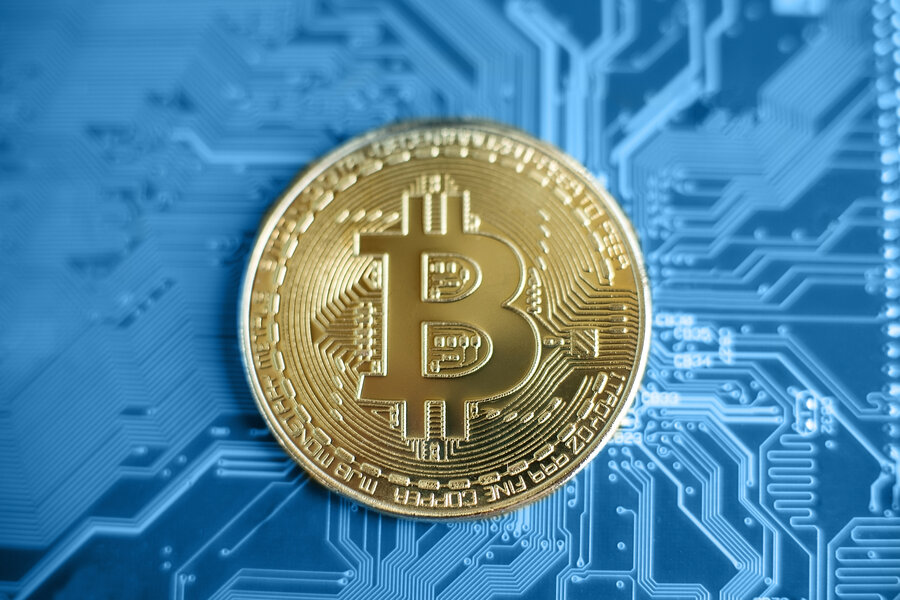Blockchain Events
News from Solana
Published
2 years agoon
Solana made a number of significant news this weekend at its Breakpoint conference. SOL, on the other hand, paid little attention.
Solana is one of several Layer 1 networks that have suffered as a result of the ongoing crypto winter. Chris Williams says that sunny skies may return.
Breakpoint Makes a Splash with Solana
Solana had a busy weekend as the Layer 1 network held the 2022 edition of its Breakpoint conference. What about SOL? Not at all.Several major announcements were made to the thousands of Solana enthusiasts who went to Lisbon for the Layer 1 blockchain’s premier event. The most significant announcement occurred on Saturday when Google Cloud said that it was running a Solana validator and will begin indexing Solana data via its BigQuery offering in early 2023. Solana will also be offered through Google Cloud’s Blockchain Node Engine, which will allow users to run their own nodes in the cloud. According to CoinGecko data, SOL surged by double digits beyond $38 as soon as the announcement was made, but the momentum did not stay. It has since dropped 5.5% to roughly $34 today.
Unlike other blockchains like Ethereum, the numerous technologists working in the Solana ecosystem have concentrated on developing goods for the mainstream market. One example is the Saga phone, which seeks to be the world’s first Web3-ready smartphone. Solana revealed at Breakpoint that the solution would be available to developers as early as next month.
Circle, another USDC issuer, also made an appearance at Breakpoint, saying that their Euro Coin offering would be accessible on Solana in the first half of 2023. The Euro Coin is already available on Ethereum. Circle also confirmed that its next cross-chain protocol will support Solana.
Star Atlas devs released an early demo for the game at Breakpoint, arguably GameFi’s most anticipated title. Solana’s high-speed capabilities (it claims to execute 65,000 transactions per second) should make it a strong contender for the Web3 gaming area, but with no leading titles available to play today, it’s unclear how far teams have progressed—and whether Solana will become a hub for the niche. Because games often take years to develop, it may be some time before Solana’s GameFi ecosystem takes off.
Solana DeFi’s Situation
Solana, like much of the crypto world, has had a difficult year, particularly in its DeFi environment.
As SOL approached $260 in November 2021, around the time of the inaugural edition of Breakpoint, Solana surpassed $10 billion in total value locked.
However, Solana DeFi has taken a hit this year as a result of falling market prices, liquidity fleeing to other networks, and severe token unlock schedules undermining the value of some of the ecosystem’s 2021 stars. Today, the entire value locked on Solana is roughly $968 million, which is somewhat less than Avalanche’s $1.31 billion and a fraction of Ethereum’s $32.29 billion, according to Defi Llama statistics. If the numbers do not alter dramatically in the future, Solana may discover that it thrives in other locations. However, it’s worth noting that the overall value locked has been more constant in SOL terms this year, falling around 54% from its peak in June 2022 to around 31.3 million SOL.
Notably, in total value-locked terms, Solana is now behind the Ethereum Layer 2 network Arbitrum and is only marginally ahead of Optimism. If Layer 2 continues to grow at its current rate, Solana may find itself not just competing for liquidity with other Layer 1 networks.
The Mango Markets and Solend exploits were both made possible by low liquidity levels on their platforms, which made it simpler for whales to manipulate their markets and take out large loans. While Solana protocols are developing solutions to such concerns, the network’s DeFi ecosystem may continue to face difficulties as long as liquidity remains low.
While Solana DeFi is down, the network’s persistent outages have received the most criticism. Solana has seen several hours-long outages in the last two years, the most recent being an 18-hour outage in September 2021. Solana has seen four major outages in 2022, the most recent of which occurred last month due to a misconfigured node.
Though network interruptions have been a chronic issue, Solana Labs CEO Anatoly Yakovenko has stated that a pending upgrade will eliminate such events in the future. If Solana can solve the problem, the network will be in a far better position by the next crypto market surge.
Taking Advantage of High Speeds and Low Costs
While Solana DeFi is experiencing a decline, the network’s NFT ecology is not.
Solana has developed a rapidly increasing community of “JPEG fanatics” with the second-largest NFT ecosystem behind Ethereum. Collections such as DeGods and y00ts have seized the NFT scene by storm this year, commanding hundreds of dollars on the secondary market despite terrible market conditions.
Solana has also drawn a number of prominent figures from the realm of digital art. Metaplex revealed at Breakpoint that it would deploy “immersive 3D NFTs” from Beeple on Solana, a major departure from Ethereum. Solana NFTs were originally launched by pplpleasr, another prominent artist in the NFT sector. Whereas Ethereum has received much of the popular attention for non-fungible digital collectibles, NFT natives have seen that activity is increasing on its strongest competitor network. Because Solana’s NFT community and infrastructure have grown so quickly during the weak market, the next NFT bull cycle may look very different from the last one.
Solana appears to be cognizant of its position in the GameFi industry as a result of its high-speed, low-cost capabilities. Breakpoint dedicated a full day to the buzzy sector when Star Atlas and other teams demonstrated their latest progress to a packed gathering of would-be Web3 gamers.
What is Solana’s Future?
While the network has problems, it is abundantly obvious that the network is producing many positive results. The multiple announcements made during Breakpoint demonstrate that, despite its difficulties, talented companies, artists, and projects are taking a serious interest in the Solana network.
It’s also worth noting that Solana and SOL aren’t the only crypto winter victims. While SOL is down approximately 86.9% from its high after excelling in 2021, several other Layer 1 networks have incurred comparable losses. DeFi has also taken a hit across the board, with Ethereum faring the best. Historically, Ethereum’s competitors—dubbed “Ethereum Killers“—have seen activity decline and coins die off in down markets, but none have witnessed as many good changes as Solana has in recent months.
The network’s competition may be the most difficult challenge ahead. Because of their promise of fast speeds, the new Layer 1 network Aptos and Sui, both designed by former Meta personnel, have been likened to Solana, and both projects have raised nine-figure war chests this year. Aptos, which promises to be able to execute 100,000 transactions per second using its Move programming language, started with a token airdrop last month, and the company’s growth is expected to be rapid. Sui is also thought to be planning its own airdrop. Capital is unforgiving in crypto; if these businesses successfully capture the attention of the space, they may end up outperforming Solana on the next market rally.
Solana, like other pioneers in the “alternative Layer 1” space, will face competition from Layer 2 networks in the near future. Arbitrum and Optimism’s rapid growth this year has demonstrated that if Ethereum succeeds, liquidity will stream into Layer 2, and many other Layer 2 projects have yet to begin in earnest.
Nonetheless, Solana has one of the most active and rapidly growing crypto ecosystems, with some exciting prospects on the horizon. Despite its shortcomings, it is evident that the network is not going away anytime soon. While SOL isn’t moving today, that’s not uncommon in crypto bear markets—regardless of how bullish the news cycle appears. However, whenever sentiment turns bullish, there is reason to anticipate that SOL will benefit.
For More Blockchain News, Click Here.
You may like
Blockchain Events
DAVOS 2023: Blockchain’s Potential Beyond Cryptos
Published
2 years agoon
January 18, 2023
DAVOS 2023: At #WEF23, policymakers and business leaders were eager to distinguish between distributed ledgers and cryptocurrencies. Not crypto, but blockchain.
From climate solutions to humanitarian aid to moving on from FTX’s stunning collapse, the second day of the World Economic Forum’s 2023 annual conference saw discussions focused on the promise of the technology underlying cryptocurrencies, rather than the often speculative financial assets themselves.
The day opened with a panel of traditional banking professionals seeking to draw a line under the FTX issue, noting that, while the cryptocurrency industry is in crisis, other products founded on distributed ledger technology are not.
“It’s critical not to mix cryptocurrencies with CBDCs, stablecoins, and DLT… they’re all quite distinct,” PayPal President and CEO Dan Schulman stated. Despite the bitcoin crisis, “the underlying tech has operated well,” according to Schulman.
“The promise of a distributed ledger is that it may be faster and cheaper to settle transactions concurrently with no middlemen. That is really significant.”
Importantly, unlike past waves of “blockchain, not bitcoin,” which generally referred to permissioned blockchains, the talks on Tuesday were OK with public ledgers such as Ethereum and the Stellar network. Lynn Martin, President of the New York Stock Exchange, seems to adopt a similar stance, citing the potential benefits of blockchain in making share issuance more efficient or allowing financial exchanges to be settled quickly rather than days later.
“Some of the technologies have now been embraced and used to truly make processes considerably more efficient,” Martin added.
Former Indian central bank governor Raghuram Rajan later repeated that promise of broader blockchain uses.
However, TradFi’s commitment to the industry may eventually be tested: When questioned, Schulman, Martin, and State Street’s Ronald O’Hanley all claimed artificial intelligence, not blockchain, was the most exciting technology.
Carmen Hutt, treasurer for the United Nations High Commissioner for Refugees, detailed such an application – a recently launched blockchain payment solution for distributing humanitarian aid in Ukraine – just across the street from the forum’s main congress center, in a historic church transformed into a neon hub for hosting discussions about the future.
Hutt revealed during a panel discussion hosted by CoinDesk chief content officer Michael Casey that the pilot project, which was launched in December using the blockchain platform Stellar network, is significantly more sophisticated than one might assume.
Donations via the blockchain promise “transparency and visibility,” and the Commission has a platform ready to send relief immediately, according to Hutt. “What an incredible offer… We can deploy $500 million today if we acquire $500 million. So this isn’t going to take weeks or months,” Hutt explained. (Later that day, Ukraine’s deputy prime minister praised the contribution of virtual money to the military effort.)
Further along the legendary “promenade,” industry heavyweights ranging from Solana and Ripple to the Global Blockchain Business Council teamed together to develop a climate project that would use blockchain’s transparent record-keeping to assist in improving carbon emissions and credit tracking.
Although authorities have mostly focused on the potential of crypto contagion to financial stability, a string of bankruptcies last year that wiped out billions of dollars in retail investments, most notably Sam Bankman-FTX, Fried’s may have underlined the need for a shift in their focus.
For the lone banker on the conventional finance panel, the events of 2022 must shift regulators’ focus away from the risk of lenders bringing down the whole financial system and toward the risk of individual customers being duped by crypto frauds. “It’s not that regulators have disregarded [financial innovations], but if it’s not going to generate systemic danger, I’m not sure why we should focus on it.” For More Blockchain News, Click Here.
Blockchain Events
Blockchain to Revolutionize Supply Chain Management
Published
2 years agoon
January 17, 2023
Blockchain has become increasingly prevalent in recent years, with applications spanning from new cryptocurrencies to their potential uses in various sectors, making it important for business leaders, industries, and regulators to have a deeper understanding of the technology and its potential applications.
While blockchain has yet to achieve widespread acceptance, it has the potential to drive significant digital transformative changes and generate new possibilities throughout the corporate landscape, from banking and finance to infrastructure and healthcare.
Blockchain is defined as “a distributed ledger that records transactions chronologically and publicly,” according to one source. Its database is shared across a network rather than being held in a single location, which enables a high level of information control and transaction transparency.
However, there has been so much hype surrounding blockchain on all sides of the debate, that it has become increasingly difficult to separate fact from fiction.
A study by Vorhaus Advisors, a Los Angeles-based digital media consulting firm, found that only 25% of people in the United States understand what blockchain is.
According to the same poll, 62% of people believe blockchain is the same as cryptocurrency, and 48% believe it is the same as bitcoin.
This lack of understanding of blockchain has caused confusion, skepticism, and fear about its use, which spreads across all sectors of industry and government, influencing not only business but also policy.
The fact is that blockchain technology has the potential to fundamentally alter how organizations and individuals trade products and information, and part of that revolution is already underway.
Blockchain has the potential to improve any business in which transactions require a permanent record and the confidence of many parties. Furthermore, it has the potential to dramatically simplify paper-intensive enterprises that require an accounting ledger.
Here are three real-world blockchain use cases to illustrate how adaptive, widespread, and disruptive it can be:
- Banking and Finance: Finance and banking have received the most attention regarding blockchain and for good reason. It’s an entirely transactional industry. For example, blockchain can convert paper-based functions such as letters of guarantee (documents provided by a bank that assure suppliers be paid for the goods or services they supply in the event that the payor is unable to pay) into a totally paperless, digital, and transparent process, helping to eradicate fraud and forgeries.
- Rethinking Healthcare: The pandemic’s unexpected demand for remote healthcare and other medical-related activities has moved the emphasis on delivering clinical treatment in a virtual or data-driven manner. As a result, the various medical data silos across healthcare providers can be integrated into a single shared blockchain network for secure and efficient data sharing.
- Supply Chain: Blockchain can also be used to improve supply chain management. A blockchain network can provide a single source of truth for the entire supply chain, from the origin of raw materials to the final delivery of goods to the customer. This can help to improve transparency, traceability, and efficiency in the supply chain.
In conclusion, blockchain is a powerful technology that has the potential to transform many industries, but it is important to separate the hype from reality. It is essential for business leaders, industries, and regulators to have a deeper understanding of the technology and its potential applications to fully harness its potential.
For More Blockchain News, Click Here.
Blockchain Events
Blockchain Boom: 90% of Businesses Now Using the Technology
Published
2 years agoon
January 13, 2023
According to the findings of a recent survey that was carried out by CasperLabs, it is anticipated that business adoption of blockchain technology will increase over the course of the following year in the United States, the United Kingdom, and China.
This is the case even though there are knowledge gaps.
Despite the fact that the cryptocurrency and blockchain industries have undergone significant change over the course of the past year, people and companies continue to display an interest in the area.
The results of a recent poll that was conducted by CasperLabs and Zogby Analytics revealed that businesses had a particularly upbeat outlook on the potential applications of blockchain technology.
The questionnaire was sent to a total of 603 “decision makers” employed by a variety of commercial firms in China, the United Kingdom, and the United States of America, in that order.
Almost all of the businesses that were asked about their usage of blockchain technology responded that they did so in some form, and almost all of those businesses (87%) also stated that they intend to make financial investments in blockchain technology during the next 12 months.
This phenomenon is especially widespread in China, where more than half of the respondents want to put money into blockchain technology by the year 2023.
According to Ralf Kubli, a member of the board of directors for the Casper Association, businesses are continuing to look to blockchain technology for solutions despite the recent turbulence:
“It is incredibly heartening to see businesses recognize that blockchain technology is not a threat but rather a solution,”
Companies who are now implementing the technology are reaping the benefits of two of its primary characteristics, namely security (42%) and copy protection (42%), both of which are proving to be highly useful for these organizations.
Those who work in IT-based operations are using blockchain technology for a variety of reasons, including but not limited to improving the efficiency of internal processes (for which 40% of users employ it), improving the efficiency of supply chain operations (34% of users employ it), and improving the efficiency of software development (30% of users employ it).
According to Kubli’s projections, the year 2023 will mark a pivotal turning point for the widespread use of blockchain technology, particularly in terms of offering practical answers to real-world challenges and producing long-term value.
In spite of this, a significant study shed light on the flaws that are commonly seen in CEOs of corporations. The vast majority of respondents (73%) feel confident in their comprehension of blockchain technology.
Despite this, 54% of those who replied continue to regard the words “blockchain” and “crypto” as being identical. In spite of the fact that the vast majority of respondents feel positive about their comprehension of blockchain technology, this is the result.
In a similar vein, it has been argued that the most significant obstacles to adoption are a lack of developer talent, a lack of tools, a lack of interoperability, and pessimism regarding the industry as a whole.
All of these factors contribute to a general sense of pessimism.
In spite of this, practically all of the people who took part in the survey stated that they would be more receptive to embracing blockchain technology if they had a better grasp of how their coworkers are utilizing it.
Education, in addition to accessibility, has been a challenge and a barrier for a significant amount of time for those people outside the space who seek to interact with the technology and engage with customers. This has been the case for many different causes throughout history.
For More Blockchain News, Click Here.













You must be logged in to post a comment Login